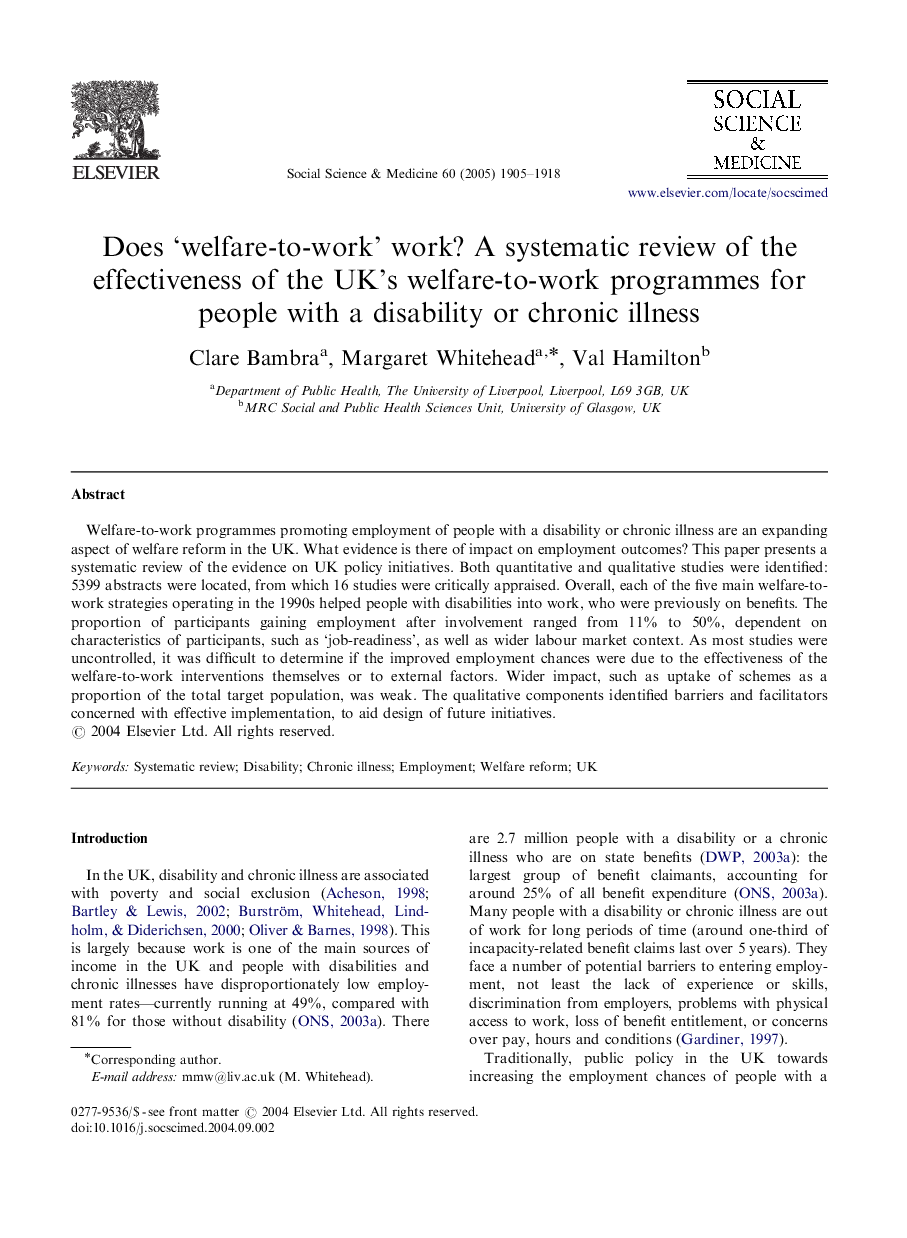| Article ID | Journal | Published Year | Pages | File Type |
|---|---|---|---|---|
| 954780 | Social Science & Medicine | 2005 | 14 Pages |
Abstract
Welfare-to-work programmes promoting employment of people with a disability or chronic illness are an expanding aspect of welfare reform in the UK. What evidence is there of impact on employment outcomes? This paper presents a systematic review of the evidence on UK policy initiatives. Both quantitative and qualitative studies were identified: 5399 abstracts were located, from which 16 studies were critically appraised. Overall, each of the five main welfare-to-work strategies operating in the 1990s helped people with disabilities into work, who were previously on benefits. The proportion of participants gaining employment after involvement ranged from 11% to 50%, dependent on characteristics of participants, such as 'job-readiness', as well as wider labour market context. As most studies were uncontrolled, it was difficult to determine if the improved employment chances were due to the effectiveness of the welfare-to-work interventions themselves or to external factors. Wider impact, such as uptake of schemes as a proportion of the total target population, was weak. The qualitative components identified barriers and facilitators concerned with effective implementation, to aid design of future initiatives.
Related Topics
Health Sciences
Medicine and Dentistry
Public Health and Health Policy
Authors
Clare Bambra, Margaret Whitehead, Val Hamilton,
